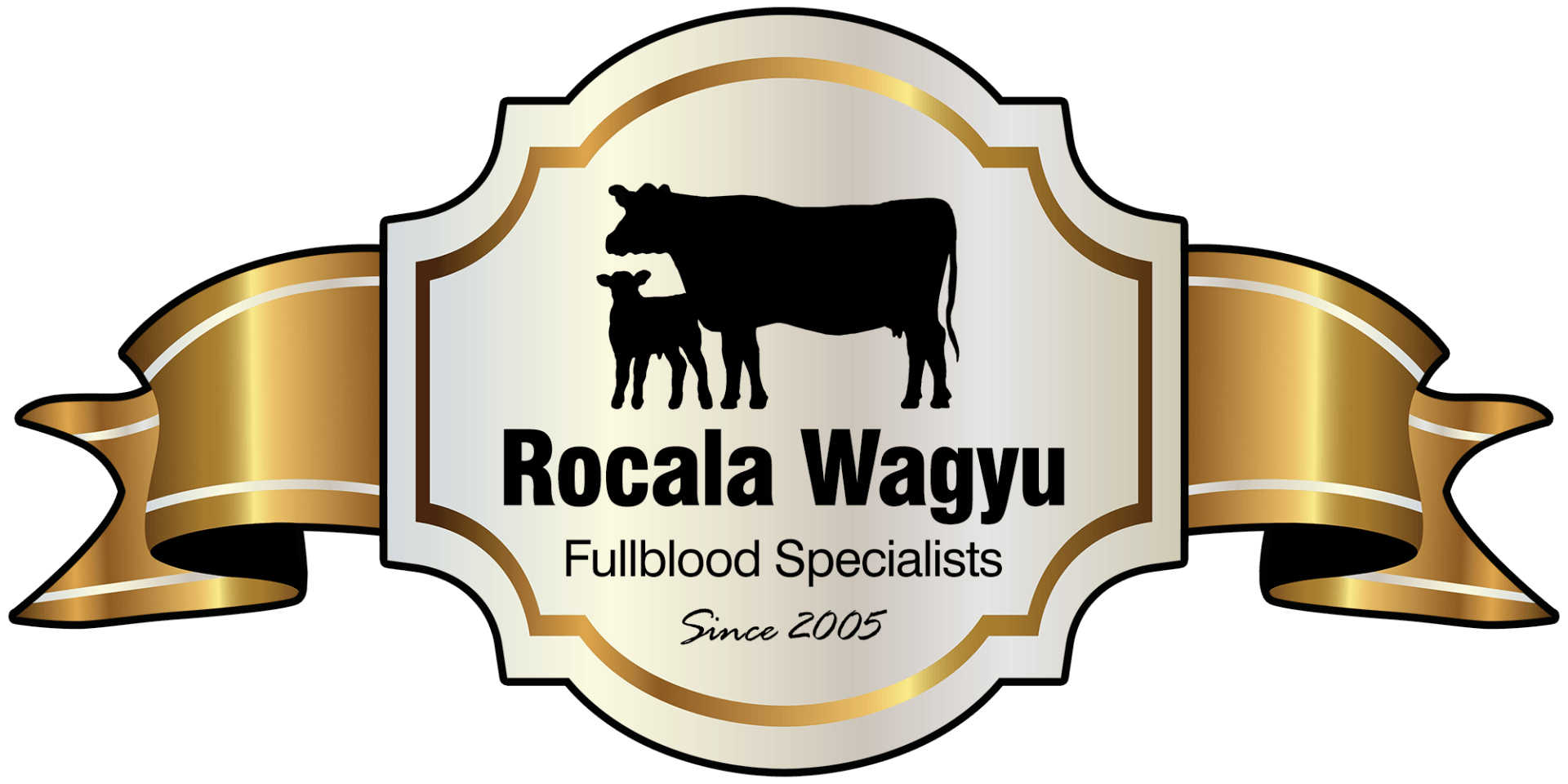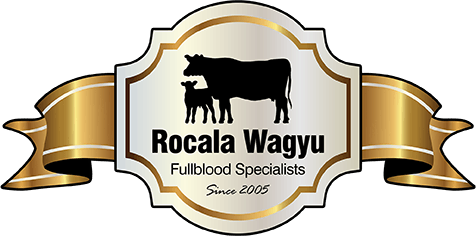ABOUT WAGYU
ABOUT ROCALA
ABOUT ROCALA
Our family farming roots extend right back to the early 1800’s. As soon as Blaxland, Lawson and Wentworth crossed the Blue Mountains west of Sydney, our forefathers became one of the very first families to settle in the Dubbo area farming on the banks of the Macquarie River. This farming heritage has now carried over to our family.
Because of the incredible difference that Wagyu offers to any other breed our story is like many other beef producers who breed Wagyu. When we first tasted it, within 24 hours we were pursuing a purchase of Wagyu genetics. We were breeding Angus cattle at that time but over the course of the last 15 years we have now transitioned to a Fullblood Black Wagyu herd. There is absolutely no other breed of cattle that can offer the taste premium of Wagyu. If you don’t want the tastiest, juiciest, tender piece of steak you have ever eaten then don’t have Wagyu.
While Sukhee and David are the ones that focus on the genetics work, the business couldn’t run without the background work in the office from Alan and Evelyn (Dad and Mum). Needless to say the countless hours spent by all three of them cleaning up after David.
We have come a long way and can now offer our Fullblood Black Wagyu Genetics with confidence as we know how their parents have performed. We continue to move forward for the improvement of our herd and will always be working to make our genetics better.
OUR PLACE
Where did Wagyu come from?
You could describe it as ‘picture perfect’. You will find our property, ‘Mullabrook’, where we breed our wagyu cattle nestled in the beautiful surrounds of the Northern New England Tablelands. Our altitude is 1200 metres which gives us the ideal temperatures year round. A mild climate is helpful for cattle as it does not stress the animal and allows them to develop their full potential in both marbling and tenderness.
OUR HERD
Our very first Wagyu bull was bought from Peter and Meryll Trotter from Letterewe Wagyu in 2005 it was a son of Itohanna 2. We then went on to purchase 50 embryos from David Blackmore in 2006 and 30 embryos off Barbara Benjamin from Goshu Wagyu in 2007. Some of the resulting daughters from those purchases still remain in our herd today (2020) and the ones that have performed consistently are currently being flushed for embryos.
Our goal was always to be leaders in the genetic field but of course that can’t be done without doing the hard yards. From the time you put a bull out in the paddock until you get carcass data back it is a minimum 3.5 years and can be as long as 4.5 years. NOTHING BEATS CARCASS DATA for a true representation of how your animals perform. We have carcass data from our custom feeding days at Maydan feedlot and we also have 100’s of bodies we have processed through our own meat business that we developed back in 2009 under the label “Cattlemans Reserve Premium Wagyu”. It was a very unique business model in that it was developed by us to grain assist our Wagyu while in the paddock at home. We then had our animals processed at Eversons abbottoir at Fredrickton NSW and butchered at Walcha Prime Meats. This was a crucial part of our learning phase as we saw not only the carcass data but every individual piece of meat. It would be portion packed and sold and delivered by us into people’s homes in Sydney, who would then give us feedback on the product.
OUR PEOPLE
Alan & Evelyn
They tried to tell us we were too old when we purchased our property at Niangala, but 17 years later at 81 (Alan) and 72 (Evelyn) we are still pulling our weight. We enjoy the many challenges of breeding wagyu cattle and the mild climate of the New England Tablelands certainly suits us. We help out when needed with the cattle work but our main responsibility is doing all the bookwork and any other administration requirements.
David & Sukhee
As managers they are young, focused and diligent in all areas of their involvement on the property. With the care of the animals and upkeep of the farm they would probably work about 70 hours a week. They love the challenge of producing the best wagyu genetics and they take extra care in their flushing programs so they can get the best results. They flush based on many attributes including EBV’s and visual but after 12 years of experience the most important reason for flushing is carcass data.
Paul
Paul works with us part time when needed as our head stockman. Paul has been working on the land all his life and is excellent working with cattle. It is important to have someone who knows what they are doing and is calm while working so the cattle don’t get too stressed. He is also very handy when we need help with fencing.
Our Environment
The care of our environment is vital to our existence now and to sustain our land for future generations.
In 2006, we entered into a 10 year agreement with the then Namoi Catchment Management Authority (CMA) to protect native flora and fauna from cattle grazing and feral animals. Our responsibilities included fencing cattle out of these protected areas and reduce the number of pigs, foxes and wild dogs. Because of this our dominant tree species of Tablelands Stringybark Gum and the vulnerable tree species of Narrow-leaved Black Peppermint (Eucalyptus Nicholii) and Mountain Gum were saved.
The list of threatened fauna was much greater including the Davies Tree Frog, Eastern False Pipistrelle, Glandular Frog, GlossyBlack Cockatoo, Yellow tailed Black Cockatoo, Eastern Bentwing Bat, Greater Broad-nosed Bat, Koala, Large-eared Pied Bat, Masked Owl, Sooty Owl, Spotted-tailed Quoll, Yellow-bellied Glider, Yellow-bellied Sheathtail Bat just to name a few.
This agreement was finalised in 2016 and seeing that it had made a significant difference in the amount of ground cover in the bush and a lack of feral animals we wanted to go further.
The Government agency had changed from CMA to what is now called Local Land Services (LLS) and the rules and laws had somewhat changed but a lot of the people in this agency were the same. We navigated our way through these new changes and came up with a signed Land management and Bio-diversity Plan agreement on July 31st 2018. We, along with funding from the government have now totally excluded cattle grazing to over 50% of our property. This also means that none of our cattle can access the beautiful unspoiled ‘Mulla Mulla Creek’ in which our property ‘Mullabrook’ is named after and is the total boundary of our place on the western side.
We have found that the necessary actions of farming and cattle grazing to the sustaining of human life can be done alongside of the equally necessary functions of our environment to human life. In our situation we have found that to be possible by keeping the two separated with cattle on one side and native corridors on the other. When the two are dominant in their own habitat that is provided for them, they thrive.



